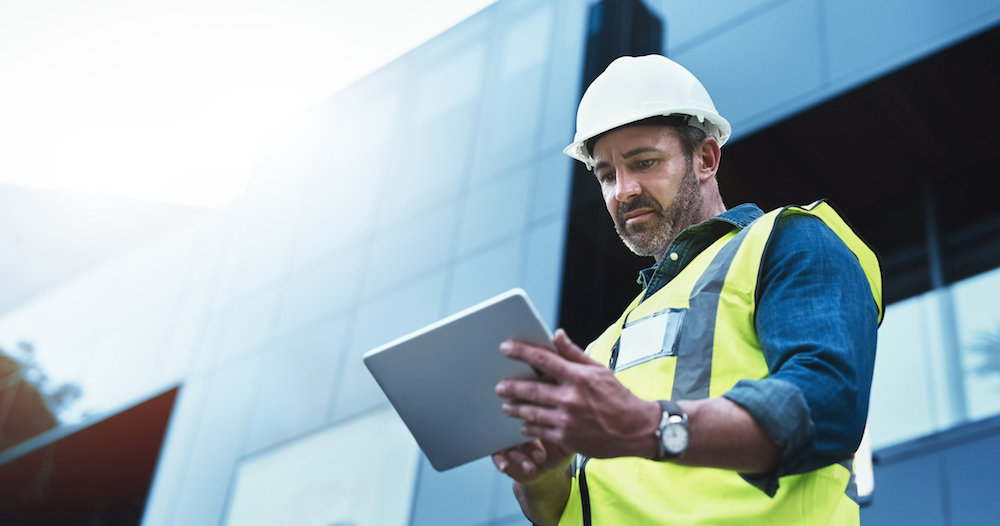
Redefining what it means to be a lone worker
Neil Sutton
Features Avert blackline safety everbridge Interface Systems lone worker PeopleImages / iStock / Getty Images Plus
PeopleImages / iStock / Getty Images Plus For many, the term lone worker conjures images of a security guard patrolling a building late at night, or a home health-care professional out and about on client visits. Lone workers might be people isolated for long stretches of time, or interacting with strangers in unfamiliar locations as a direct consequence of their job or profession.
But the whole notion is undergoing some scrutiny, with many of the assumptions around “lone work” being reassessed, and the definition widening to include more types of jobs and scenarios.
Some of this is a bi-product of the pandemic and its dramatic effect on workplace norms. Huge swathes of the workforce found themselves essentially working alone for the first time in their careers, sent home from their offices to set up makeshift workspaces in bedrooms and basements. But many of us were lone workers well before we knew what COVID-19 was, if only for limited periods. Work-related travel and hotel stays, for example, could constitute working alone.
Matt Smitheman is a senior solutions consultant at Interface Systems. The company’s line of security products and services includes lone worker solutions such as two-way audio and video communications. He says that there can clearly be occasions or times during the work day that transform a team employee into a lone one. Retail is a particularly keen example of this.
“You may have three or four people in your location, but if you have to send somebody from your location to a remote stockroom to pull stock, that person is a lone worker for that period of time,” explains Smitheman.
“We’ve been supporting lone workers for years and years,” he says. “In the jewelry industry, we do this for openings and closings. Traditionally in retail, one of the most vulnerable points is opening and closing, where you’re not inside the four walls of protection yet.”
The pandemic increased the degree to which a retail employee might spend time alone. “When COVID came, there was a huge surge in curbside delivery,” says Smitheman, as retail staff “free-roamed to various places in the mall or even completely off-premise.”
Sunita Mani, Interface’s senior VP of marketing, also notes high turnover rates in retail and restaurant positions have left some employers short-staffed, increasingly the likelihood that employees find themselves alone more frequently.
Brendon Cook, chief partnership officer at Calgary-based Blackline Safety, says the pandemic has brought more awareness to the lone worker field but the trend towards a better understanding of workplace risk was already underway. The company produces monitoring tools and wearable devices for workers in industrial settings, including gas detection technology through its G7 product line. Cook notes that educating end users on the effective use of these tools is key when it comes to their safety.
“We have a very strong focus on learning within our own business, but also how we go to market, because we’re selling a sophisticated product to industrial customers,” he says. “We have to make sure that the employees within those client businesses are trained on how these products are different from what they may have used in the past.”
Duty of care
Tracy Reinhold, chief security officer for Everbridge, a provider of mass communications, crisis management and security solutions, says that the pandemic has certainly revised the definition of what constitutes a lone worker, but it has also drawn more attention to the concept of “duty of care” of an employer for its employees.
“Now we have a whole plethora of employees around the world who are no longer coming to the office. Does our duty of care extend to the remote worker? I would argue that it does. One of the ways that we can do that is through the advance of technology,” he says.
Geo-fencing locations and overlaying real-time threat information can allow an organization to stay connected with its employees, he says. A threat could be an impending weather system, for example, that might have a direct impact on employee safety. “It should be the employee’s expectation that the company cares about their welfare when they are working for the organization — even if they are working remote,” he says.
Remote could mean “out of office,” or could also mean an overseas business trip, making that an employee a lone worker in a foreign location, adds Reinhold. Everbridge introduced a travel risk management solution last November following its acquisition of U.K.-based Anvil Group and its Riskmatics platform. Anvil customers collectively monitor more than 75 million trips in an average year, almost seven per cent of them to high-risk destinations, states the company’s website.
Continued growth
The lone worker market continues to grow, according to analyst firm Berg Insight, which notes in a 2021 report a variety of contributing factors including occupational safety regulations, increasing employee insurance costs and a focus on protecting brand reputation.
The market, once driven by public sector customers, is also opening up to more private sector opportunities. Berg Insight estimates the North American lone worker market was 320,000 users of connected safety solutions at the end of 2020 and is expected to expand to 605,000 users at the end of 2025.
“It’s developing very quickly,” says Smitheman, noting the rise in interest. “We’re constantly getting calls from our customer base and new customers saying, ‘Have you thought about this? Can you do this with that particular device?’
“The market has more than doubled, from what we’re seeing. If there’s any indication from what we’re seeing right now, I think that’s going to happen again.”
Print this page
Advertisement
- Canada’s international disaster responders have skills and experience that could be deployed in emergencies here at home
- Suspect who killed 3 in Montreal area represented ‘significant risk’ to public safety
Leave a Reply